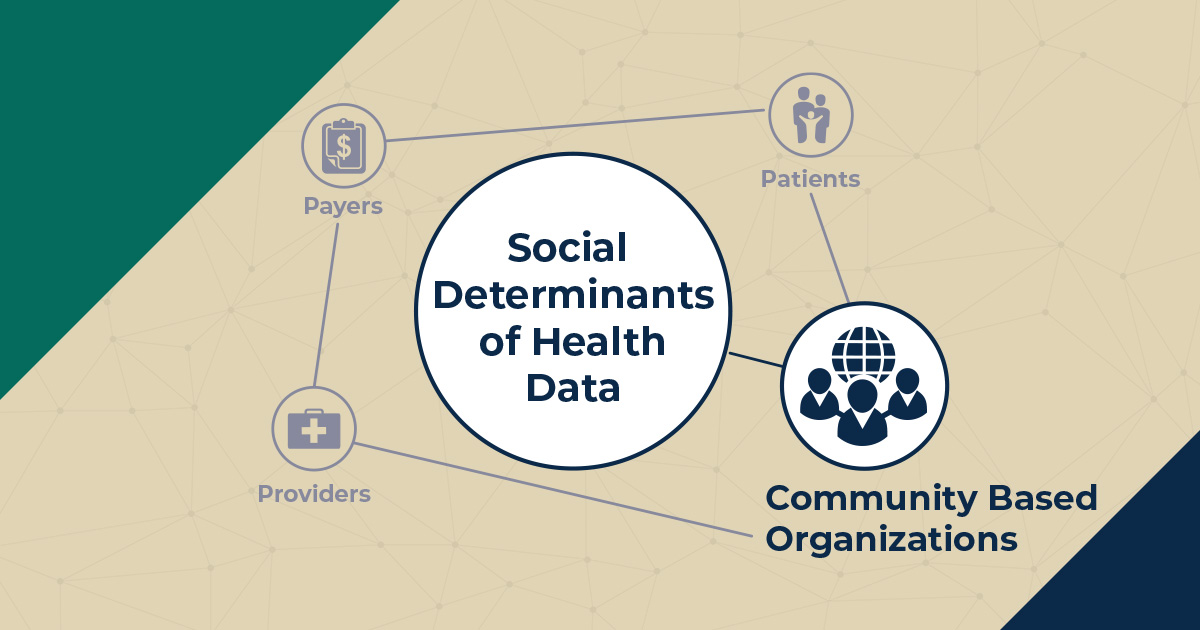Clinical care only accounts for a small part—an estimated 10 to 20 percent—of the factors that affect population health. The rest is determined by social, behavioral, and environmental factors such as education, housing, and income, which interact dynamically to shape people’s health and well-being. These factors, which are sometimes called social determinants of health, play such an outsized role in keeping people healthy that a growing number of leaders in the government, philanthropic, nonprofit, and private-sector health care communities believe it is critical for providers to address them.
To improve patients’ overall health and well-being, we need better information about social determinants of health and the best ways to tackle them. This blog post is the second in a series that explores the needs, challenges, and opportunities related to collecting and using social determinants of health data to drive decisions in health care delivery and payment. Each post will examine these questions from the perspective of a different stakeholder group involved in such decision making. Click here to read the post introducing this blog series.
This post describes how community-based organizations have been—and can be—critical partners in collecting and acting on social determinants of health data.
Community-based organizations (CBOs), such as local food pantries, homeless shelters, and YMCAs, have long served as a bedrock of community well-being. These nongovernmental organizations deliver a host of social services, from job training to free meals to help with finding affordable housing. They are, in short, on the front lines of addressing social determinants of health.
Policymakers’, practitioners’, and communities’ increased recognition of the huge impact that social determinants of health have on health outcomes and health care spending—especially among vulnerable and disadvantaged people—highlights the importance of partnerships between CBOs and health systems. Some value-based health care programs even require that providers formally contract with CBOs to address social determinants of health and improve care coordination.
Unfortunately, these same pressures have also led some health systems to begin collecting their own social determinants of health data—efforts which often duplicate or are misaligned with CBOs’ data collection efforts. These health systems are missing a critical opportunity to share resources and make collaborative decisions about how to improve the lives of the people that they and CBOs both serve.
- Demographics and socioeconomics
- Age, race, immigration status, language
- Family structure
- Housing/neighborhood
- Employment and education
- Community resources and infrastructure
- Parks
- Food access
- Transportation
- Safety
- Schools
- Faith-based organizations
- Other CBOs
- Use of social services
- Programs referred
- Programs used (intensity of use)
Compared with health systems, large CBOs are often better positioned to collect data on social needs and the use of social and community services. CBOs can collect more nuanced, ongoing, and up-to-date data about community members, such as recent housing transitions, new contact information, and changes in health care providers. With their multifaceted understanding of the communities in which they work, CBOs offer a valuable lens through which health systems can see how certain social services affect a community’s health—and how an intervention’s effects could be dampened by other underlying social needs. These insights can help drive innovation along the path toward universal, equitable health care.
What are the barriers to making better use of CBO data?
Researchers have mostly used CBO data for specific studies or purposes, but the systemic use of these data for decision-making has been limited. Common barriers to data sharing include the following:
- Concerns about data privacy and confidentiality. Although sharing data between health systems and CBOs could lead to better coordination in care and improved health, there is some concern that bringing together data from various sources without the subject’s explicit consent could provide too much information about the person and be misused. Concerns about data collection and use are particularly relevant to disadvantaged or marginalized people, who have a history of being treated unethically by researchers, such as in the infamous Tuskegee study. CBOs and their health system partners need to understand and assuage these concerns to maintain the trust of the communities they serve.
- System interoperability. Regulations from the Health Insurance Portability and Accountability Act (HIPAA) include standards for data processing, including provider identifiers, electronic data interchange, and protection of data. But these regulations only cover health care transactions and do not account for the variety of formats and data infrastructure used across health systems and CBOs. Data fragmentation also makes it difficult to easily transfer, link, and analyze data across organizations and communities.
- Financing. Properly funding the development of CBO data collection systems and hiring professionals to collect and analyze the data are critical. But because many CBOs operate on shoestring budgets, they often have trouble attracting and retaining staff with the data analytic skills necessary to enter into dynamic data-sharing arrangements with health systems.
Road to the future: How can CBO data and insights improve patient health?
Despite the barriers, some programs have already discovered ways to use non-health-sector and community data to improve health. Examples include the following:
- Predicting “hot spots.” Programs in Missouri and New York have used non-health-sector and community data from census and other surveys on demographics, community infrastructure, and weather patterns to predict rates of unintended pregnancy and infectious diseases. Widespread use of CBO data could help decision makers better predict, prepare for, and combat the impacts of social determinants of health on a single person’s illness or on community disease outbreaks.
- Delivering services where they are needed most. Being able to predict hot spots of heavy need for health and social services can provide insights on how and where to roll out new programs or to scale what works. Understanding where to intervene first—in areas with the biggest need but fewer existing resources, or in areas of easiest entry but potential smaller impacts—can set up an intervention for success. For example, CBOs and partners took results from our unintended pregnancy analysis in Missouri to help decide which regions to target first in order to make the biggest impact with the available resources.
- Underlying health impact. Helping to disentangle the effects of a health intervention from other factors is one of the most important ways that non-health, social-sector data can shed light on what causes certain health outcomes. For example, it’s not uncommon to include receipt of social services, such as the Special Supplemental Nutrition Program for Women, Infants, and Children, in economic models examining maternal and infant health outcomes; doing so enables researchers to assess whether social services, rather than health care services, drove observed changes in health. But data are not always available on the use of social services, and even when they are, CBOs are often not consulted on potential relationships between the variables or on the plausibility of the findings. Including these data and insights could lead to more robust results.
CBOs represent an established resource and a potential well of rich, real-time information on the use of social services and the underlying conditions in the community. Combining CBO data with the data available from the health system could help unlock answers to fundamental questions, such as “How much will addressing social determinants of health really save and improve lives?”
But drawing on CBOs’ social-sector data and deep understanding of the communities they serve may require changing the current paradigms for partnerships between health systems and CBOs. Current financing and value-based payment models include incentives for health care providers to work with CBOs and improve their data systems to capture social determinants of health—but these incentives focus on health systems, not on CBOs. We must not forget CBOs in these incentive models, the important work they do, and the potential insights we could glean from their data in our pursuit of more comprehensive and equitable pathways to health.
Read other posts in this series:
- To Address the Social Determinants of Health, Start with the Data
- Lost in Translation: The Importance of Social Determinants of Health Data from the Patient Perspective
- Prescribing Social Services: Leveraging Data to Diagnose and Treat the Social Determinants That Affect Health
- In Pursuit of Value: How Payers Can Leverage Social Determinants of Health Data to Improve Outcomes




